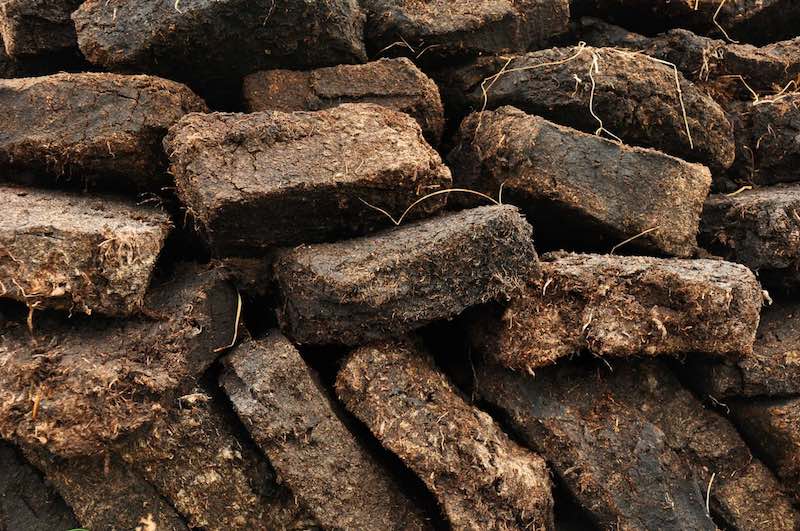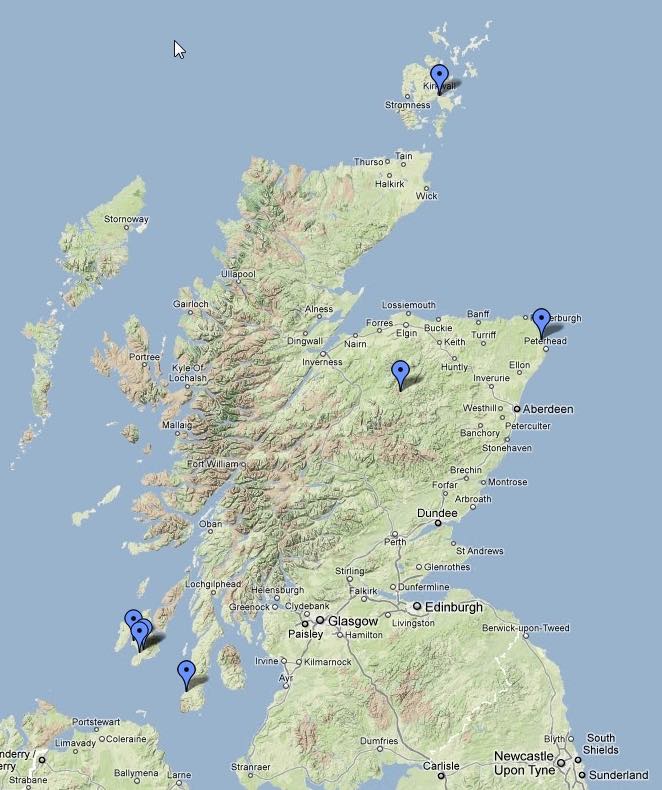Does Terroir Influences Scottish Peat?
Peatheads around the world would tell you that peated malts are one of the best things that happened to them. Geek Choc, for one, claims that peated whisky smells heavenly. I am somewhat more reserved on peat, but some of those peated whiskies are fantastic! What is peat? Encyclopedia Britannica defined peat as a spongy material that formed by the partial decomposition of organic matters in wetlands. Depending on the location or terroir, peat can take on different chemical compounds and produce differentiating quality.
Where is Scotland’s Peat?
As you can see from the above map, Scotland has various locations of peat bogs. Three of them are in Islay, one in Campbeltown, one in Orkney and the remaining two in the Northern Highlands. As we have tasted different characteristics of peaty whiskies, we wonder if the peat from the various locations contributes to the subtle difference in peaty whiskies.
History of Peat
Let’s start with the historical usage of peat in Scotland. Peat was a conventional fuel used in kilning to dry malts in the past. The islands, Campbeltown and the Northern Highlands, used peat regularly as coal was not readily available. Back in the 1940s, it was typical for the Islay and Campbeltown malts to use 100% peat fire, while the Highlands utilised 50-75% peat. The Lowlands used 25-50% peat. By the 20th century, the advances in technology made coal, gas and oil more affordable, and the reliance on peat reduced significantly. Nonetheless, Islay, Campbeltown and Northern Highlands still produce peated whisky today.
How is Peat Formed?
Peat formed in waterlogged lands through the partial decomposition of organic matter. It appears that there are differences between peat composition based on the different climate, vegetation, bog type and also the cutting depth during the harvest. We can divide peatlands into bogs, fens, marshes and swamps.
Bogs form through heavy rainfalls and contain more sphagnum moss than the other types of peatlands. Bogs also have lesser woody vegetation as compared to the rest. Fens (better known as basin bogs) have more sedges and grass. Marshes, in general, are treeless waterlogged areas and peat formed very slowly. Swamps, on the other hand, are very minerotrophic and the peat has high wood and nutrients contents.
The Contents of Peat
To delve deeper into the contents of peat from the different peatlands, we need to venture deep into a chemical discussion. To ensure that we do not delve too deep into the scientific names (and lost myself along the way), we will stick to layman terms. In general, peat is 90% water and 10% dry matter. The 10% is sub-divided into 92% organic matter and 8% inorganic. Peat formed from bogs are usually more aromatic due to the higher percentage of phenols and aromatic materials found in them. Peat from fens is less aromatic.
Cutting Depth
The cutting depth during a peat harvest is as vital as the type of peatland. The surface layers are usually not aromatic enough to create the smokey effects in the whisky that we love, but cutting too deep into the layers can capture too much harmful nitrogen and sulphur compounds in the peat. Therefore, every distillery that makes peated whisky has their own calculated cutting depth to ensure that the peat they use will produce the effects that they want.
Peat Terroir
Does terroir influence peat? Our research appears to point to the peatland location and cutting depth of the peat as the “influencer”. While the type of peatland and vegetation influence the peat subtly, they are not crucial for the flavours in the whisky. For example, the peat used in Laphroaig and Bowmore are similar to each other as both are fens found on Islay. Yet, the peat found in Laphroaig and Bowmore whiskies are very different. It points to the different cutting depths that both distilleries use, and of course, the interaction between the malts and the casks used. The only difference in the peatlands found in Islay is interestingly from Port Ellen. The contents of the peat using in Port Ellen maltings are woodier in natural and has different microbiology from the rest of Islay.
Interestingly, the peat from Orkney Island is relatively similar to the peat found in the fens of Islay even though it is a bog and not a fen peatland. The peat from the Northern Highlands in Tomintoul is also different from those in Islay, even though it is a fen. The difference in contents across the peatlands in Scotland suggests that peat forms differently due to the climate, microbiology and also the variety of sphagnum moss.
Conclusion
In conclusion, the research points to peat terroir. The contents of the peatland differ across Scotland with local variation found. The cutting depth during the peat harvest also plays a significant role in the flavours of the whiskies as is evident from the different peaty flavours found in whiskies harvesting similar peat.




